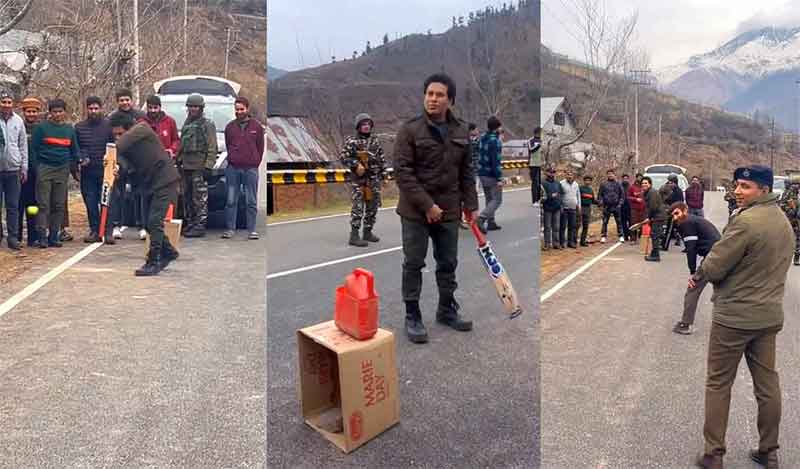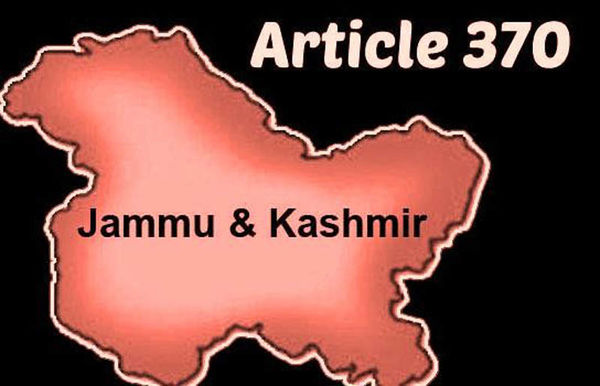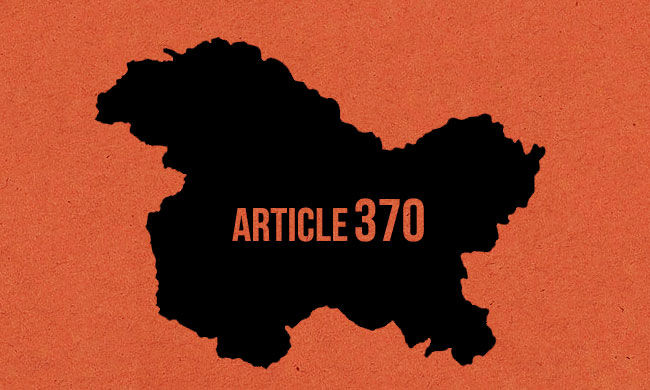
A lot has changed in the region that formed the erstwhile Indian state of Jammu and Kashmir since the first week of August last year. The heart wrenching part is, people in the ‘mainland’ for the most part aren’t even informed about the same, since we have been forced to remain radically detached from the people in those regions. The abrogation of Articles 370 and 35(A) took place alongside an increase in the number of armed military troops in the region, and for a long time, a complete shutdown of communication and internet services in the region. Even at present, the entirety of the region has not witnessed communication linkage with the rest of the ‘mainland’ (which is ironic because the claim is, it is connected to the ‘mainland’ even more strongly with the abrogation of the articles and its conversion into Union Territories).
In the first week of November, when the government introduced the new land laws, reiterating that the provisions under Article 35(A) were ‘regressive and anti-people’, it was received with opposition from the region of Kashmir. The new laws, which according to the Indian State isn’t ‘anti-people’ allows the sale and purchase of immovable property within the region, to people from outside the region, including for industrial purposes. In the past, industries, hotels, hospitals, schools, colleges by outsiders could be set up on a piece of land in the J&K state if the state government allowed its usage on lease, but now land for such purposes can be owned. The central government, alongside criticizing article 35(A) at various levels including at the level of being gender discriminatory (which is untruth weaved by the State), also claimed that the new land laws shall encourage the region’s ‘development’ and provide employment opportunities for many. When the State makes claims, especially on a region which has remained disconnected with the ‘mainland’ for a while, perhaps the claims should be filtered through some critical thought.
The abrogation of the two articles which rested special status with the erstwhile J & K state was defended by a common rhetoric, i.e. Article 370 was meant to be temporary and was supposed to be removed from the Indian constitution long back. If so, then why hasn’t it been removed all this while? Article 370 was incorporated into the Constitution of India in 1949 under the historic understanding and agreement between the Congress government and Maharaja Hari Singh which accorded special status to the state and it thus became a part of the Indian Union. Indeed, the applicability of this article was meant to be temporary and it was decided that gradually, the decision regarding it shall be taken by the State Legislative Assembly. After a few years in 1954, article 35(A) was implemented alongside other provisions which granted terms regarding permanent residents, employment, ownership of property, extension of the jurisdiction of the Supreme Court of India etc. to the state. In 1956, the State Legislative Assembly which was supposed to take a decision on whether to scrap Article 370 or not, got dissolved and its significance and applicability remained. Apart from several legal experts and court orders that have deemed the article permanent thereafter, it has also been asserted that no decision regarding Article 370 can be taken either without permission from the State Legislative Assembly, or through a constitutional amendment. Besides, it should be a part of common sense among most of us that in case the State Legislative Assembly is dissolved, general elections are mandatory – only after which decisions regarding legal provisions can be proposed. Therefore, beyond the human rights violation regarding an increase in military troops and suspension of the internet for more than a year in Kashmir, the act of abrogation itself is unconstitutional.
In claiming that protests regarding the abrogation and a historical struggle for self-determination of the Kashmiri people is a selective voice representing the aspirations of only a part of the erstwhile state, it is true that a part of the Ladakh region has historically wanted to be a separate Union Territory with a more direct connection with the central government. Ladakh – with the Leh district which is Buddhist dominated, and the Kargil district which is Shia Muslim dominated – felt deeply neglected by the erstwhile governments of Jammu and Kashmir. So while we can claim a positive move towards turning the Ladakh region into a Union Territory since its people’s demands were met, what is the justification for converting the regions of Jammu and Kashmir into a Union Territory as well? While states were being reorganized in 1956, the States Reorganization Committee recognized a category of regions which cannot be given the structure and status of statehood being financially feeble, unbalanced and administratively unstable. These regions will require more direct support from the central government. Here is where the dubiousness of enforcing a UT status on Kashmir can be witnessed – not only has it been enforced without the will of the people and without considering their demand for self-determination, but also the reasons behind the UT status are non-applicable to either the Muslim dominated Kashmir or the Hindu dominated Jammu. The erstwhile state was arguably one of the most egalitarian economies in the country with measure of indebtedness much lower than other states, and only around 2 percent of the population forming the landless agriculturalists. Over the years, it has also been noticed and reported by media and human rights organisations, that while radical separatists have caused violence and occasionally disrupted the lives of ordinary people, the Indian armed forces under draconian laws such as the Armed Forces (Special Powers) Act and Disturbed Areas Act, that give arbitrary power to the defense and military troops to kill arbitrarily, use pellet guns due to which several people in Kashmir have been injured beyond treatment and to engage in perpetrating torture (also of sexual nature on Kashmiri men and women) have ‘destabilized’ the socio-political life more than anything else. Looking closely, a strong and self-sufficient economy and political instabilities caused by the Indian State itself (for the major part) does not go logically with the conceptualization of a Union Territory back in 1956. Therefore, converting the Jammu and Kashmir regions into a Union Territory does not even fit a good rhetoric by the government, and is clearly an outright step towards more repressive State control and human rights violations in the regions.
Moreover, the strong, self-sufficient economy of the erstwhile J & K state developed precisely due to Article 35(A) with a combination of the Big Estates Abolition Act in 1950 – which the state government had passed limiting the portion of land which could be held under the possession of big landlords, beyond which the land had to be transferred directly to the tillers. Under this Article then, one important tenet was that agricultural land could be given to other agriculturalists, including to those who had remained landless and contract-based peasants. And, due to restrictions on owning immovable property by outsiders, land was circulated only within the state – thereby diminishing socio-economic differences across the society. The state of Jammu and Kashmir was the first state to introduce the practise of ‘land to tiller’. Due to the difficulty of maintaining and surviving a distinct demography, not only were people secured in terms of property, residence and employment, but they lived in a society which had equity.
Now, as the government introduced new land laws in which agricultural land can be sold for industrial purposes and private enterprises as well, the local population up to a large extent lose their economic self-sufficiency due to a potential loss of immovable property. With the announcement of these laws, even the region of Ladakh was fraught with concerns over loss of land, employment opportunities and their distinct culture and society. While Leh has requested to be included under the Sixth Schedule and/or to be positioned under an extension of Article 371 which provide constitutional safeguards to Tribal populations, Kargil has in fact voiced in favour of a return to the ‘statehood’ status that existed before August 5, 2019. It is still not particularly certain as to what will happen with these regions, but the new land reforms introduced by the government are arguably more ‘regressive’ and ‘anti-people’ than the ones protected under Article 35(A). They have increased the brutal uncertainty that these regions have been subjected to since last year, by weaving yet another layer of lies.
Anamika Das is currently pursuing her MPhil in Social Sciences at CSSSC. Email id: [email protected]
SIGN UP FOR COUNTERCURRENTS DAILY NEWSLETTER















































